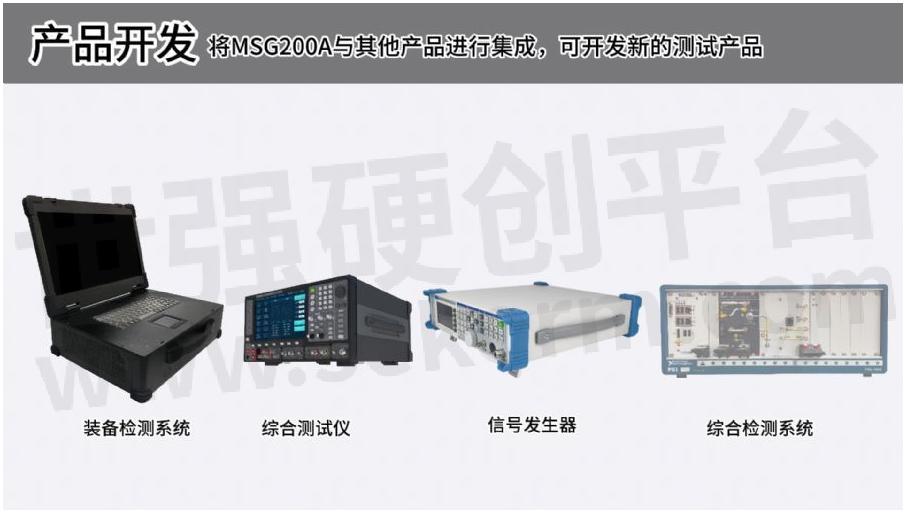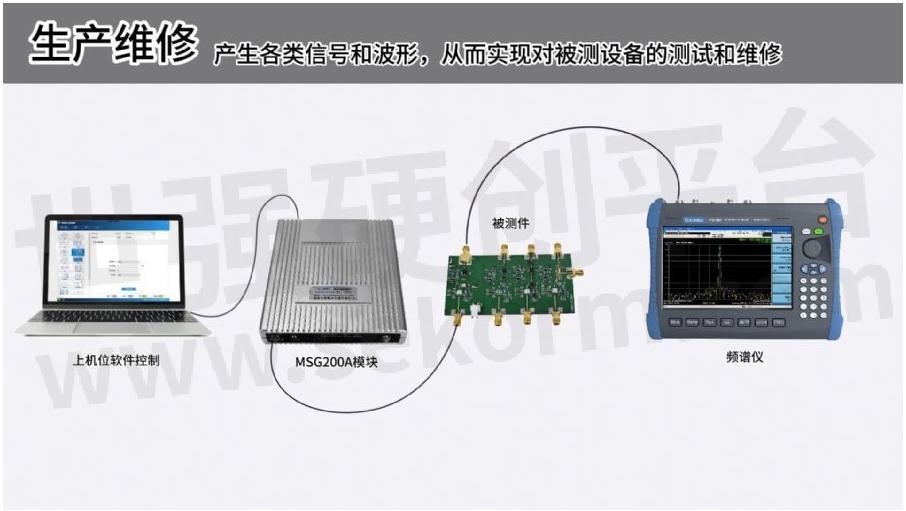Baluelec Releases MSG200A Microwave Signal Source Module with the Frequency Range of 9kHz ~ 20GHz

Baluelec launches a new MSG200A signal source module. This product has the characteristics of a wide frequency band, large power dynamic range, small volume, lightweight, and low power consumption. The main technical features are high performance, high -use, high scalability, and easy integration. Its frequency reaches 9kHz ~ 20GHz.
Product Description
The MSG200A microwave signal source module has ultra-broadband bands, excellent performance, and convenient integration characteristics. The module has a variety of practical functions such as continuous wave signals, simulation modulation, pulse modulation, amplitude/ frequency scanning, and low-frequency function waveform output. Cost-effective.
The module height is standard 1U, which is suitable for system integration and desktop test measurement equipment. The complete standard SCPI command set and universal LAN interface bring great convenience for you to remote control and secondary development.
Main Parameters
Frequency range: 9kHz ~ 20GHz
Output power range: -120dbm ~+10dbm
Frequency resolution: 0.01Hz
Power accuracy: ≤1.0db (ALC is opened)
Phase noise: ≤ -115dbc/Hz@10kHz (1GHz)
Pulse Flip Break:> 70DB
Harmony: ≤ -30dbc (0dbm output)
Non-harmonic: ≤ -60dbc (0dbm output)
Industry Application
It is mainly used in the fields of teaching and scientific research, product development, production and maintenance, to meet the application needs of different application scenarios.

Product development: integrate MSG200A with other products to develop new test products, such as comprehensive tester, assembly detection system, etc.

Production and maintenance: to generate various signals and waveforms, to achieve testing and maintenance of the testing equipment

Teaching and scientific research: help students and researchers understand and master various signals, waveforms and frequencies
Features
1. Continuous wave signal output
2. Simulation modulation (containing am/fm/φm)
3. A amplitude/frequency scan (including amplitude/frequency/amplitude)
4. pulse modulation
5. Low -frequency output (sine waves, waves, triangular waves)
- +1 Like
- Add to Favorites
Recommend
- Baluelec Releases HRA4080 RF Comprehensive Tester Supporting Multi Touch Operation for Various Parameter Testing Needs
- How to Use the Spectrum Analyzer?
- Handheld Spectrum Analyzer Function
- The ST4000 Series Integrated Tester Can Be Selected from 9kHz ~ 1.8GHz to 9kHz ~ 6GHz
- The Principle and Use of the Signal Generator
- What Is the Difference Between Vector Signal Source and Radio Frequency Signal Source?
- How to Calculate the Frequency of the Signal Generator?
- EMI Measurement of the Working Principle and Product Advantage of the Receiving Machine
This document is provided by Sekorm Platform for VIP exclusive service. The copyright is owned by Sekorm. Without authorization, any medias, websites or individual are not allowed to reprint. When authorizing the reprint, the link of www.sekorm.com must be indicated.






























































































































































































































































































































































































































































































































































































































































































































































































































































































